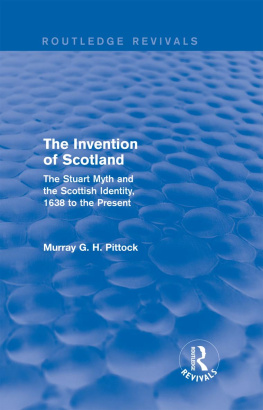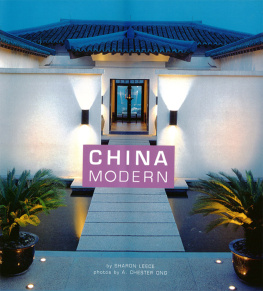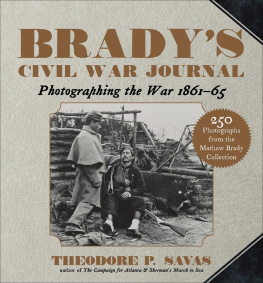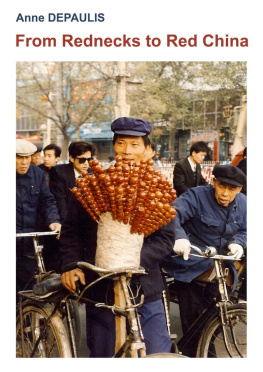First published 2009 by M.E. Sharpe
Published 2015 by Routledge
2 Park Square, Milton Park, Abingdon, Oxon OX14 4RN
711 Third Avenue, New York, NY 10017, USA
Routledge is an imprint of the Taylor & Francis Group, an informa business
SERIES CONSULTANT
Jeffrey W. Allison
Paul Mellon Collection
Educator, Virginia Museum of Fine Arts
Cover Photos:
Portrait of Abraham Lincoln before delivering his Cooper Union address (Mathew Brady);
Mathew B. Brady with a battery before Petersburg, VA (photographer unknown).
Series created by Kid Graphica, LLC
Series designed by Gilda Hannah
Map: Mapping Specialists Limited
Copyright 2009, Taylor & Francis. All rights reserved
No part of this book may be reprinted or reproduced or utilised in any form or by any electronic, mechanical, or other means, now known or hereafter invented, including photocopying and recording, or in any information storage or retrieval system, without permission in writing from the publishers.
Notices
No responsibility is assumed by the publisher for any injury and/or damage topersons or property as a matter of products liability, negligence or otherwise, or from any use of operation of any methods, products, instructions or ideas contained in the material herein.
Practitioners and researchers must always rely on their own experience and knowledge in evaluating and using any information, methods, compounds, or experiments described herein. In using such information or methods they should be mindful of their own safety and the safety of others, including parties for whom they have a professional responsibility.
Product or corporate names may be trademarks or registered trademarks, and are used only for identification and explanation without intent to infringe.
Library of Congress Cataloging-in-Publication Data
Murray, Stuart, 1948
Mathew Brady: photographer of our nation/Stuart A.P. Murray.
p. cm. (Show me America)
Includes bibliographical references and index.
ISBN 978-0-7656-8151-5 (hardcover: alk. paper)
1. Brady, Mathew B., 1823 (ca.)1896Juvenile literature. 2. Photographers
United StatesBiographyJuvenile literature. 3. Portrait photographyUnited
StatesHistoryJuvenile literature. 4. United StatesHistoryCivil War,
18611865PhotographyJuvenile literature. I. Title.
| TR140.B7M97 2008 |
| 779.092dc22 | 2008000113 |
ISBN 13: 9780765681515 (hbk)
Like a ray of light still traveling toward the vision from some past world or star, Mathew B. Brady is at the camera still and if he lives eight years longer will reach the twentieth century and the age of seventy-five . [H]e turned my head a few weeks ago between his fingers and thumb, still intent upon that which gave him his greatest credit-finding the expression of the inner spirit of a man. [Bradys fingers] had lifted the chins and smoothed the hairs of virgin sitters, now grandmothers, the elite of the beauty of their time, and [of] the rulers of parties, sects, agitations and the stage . Brady has been an idealist [and] because he had a higher passion than money, we possess many a face in the pencil of the sun . Brady is not rich. He allowed the glory of the civil war to take away the savings and investments of the most successful career in American photography.
George A. Townsend
New York World, April 10, 1891
Brady is at the camera still, [continuing] the most successful career in American photography.
George A. Townsend, New York World reporter
I n the spring of 1891, a newspaper reporter who happened to be passing by the gallery of Mathew B. Brady in Washington, D.C., decided to pay the famous photographer a visit. The reporter was amazed by what he found there, and he wrote about his experience in the New York World.
Brady the photographer alive? he began. The man who [photographed] Mrs. Alexander Hamilton and Mrs. Madison, Gen. Jackson, and Edgar A. Poe? Thought he was dead many a year. Brady is at the camera still, [continuing] the most successful career in American photography.
That career, however, had lost its glory. Mathew Brady could no longer afford a handsome studio, nor did he have the funds needed to record events with his camera. Brady already had recorded one of the most important events in the history of the United Statesthe Civil War of 18611865. In doing so, he had spent almost everything he had, and his efforts to assemble thousands of images of the war had ruined him financially. Despite his losses, Brady believed in the importance of his achievements, as he said, I regarded myself as under an obligation to my country.
Bradys Washington gallery was impressive. On the walls hung hundreds of photographs of public people who lived from the 1830s to the 1890s. There were presidents, queens, and princes; famous generals, politicians, writers, and legendary individuals from Americas Revolutionary period. In Bradys successful years, the most powerful, rich, and fashionable peopleincluding celebrities in the theater, business, and sciencewanted the words Photographed by Brady imprinted on the frames of their portraits.
Federal soldiers survey their dead on the battlefield at Chancellorsville, near Fredericksburg, Virginia, 1863. Mathew Brady and several other photographers journeyed to the scene to record the engagement in which a total of 18,000 Union and Confederate soldiers died.

















